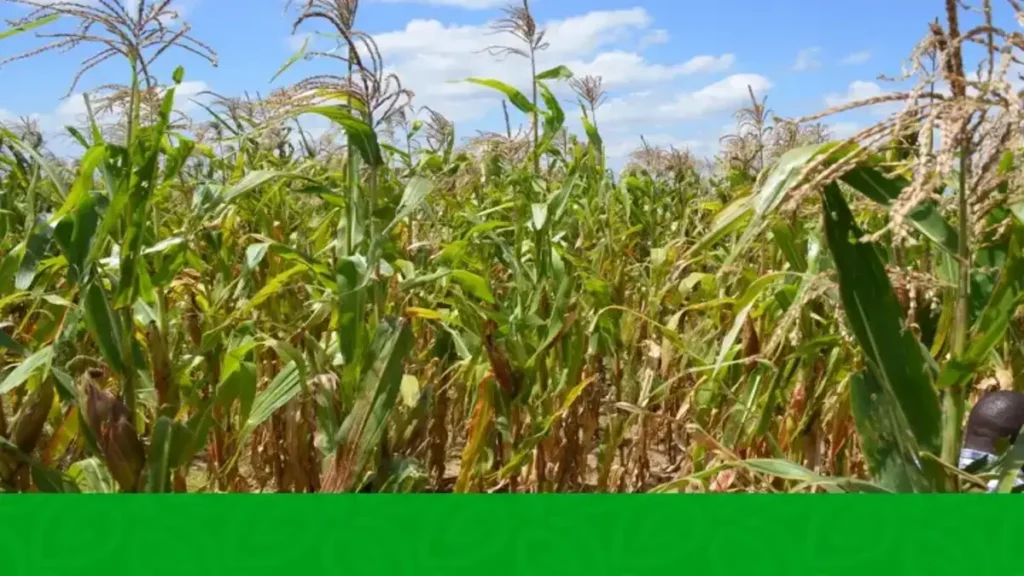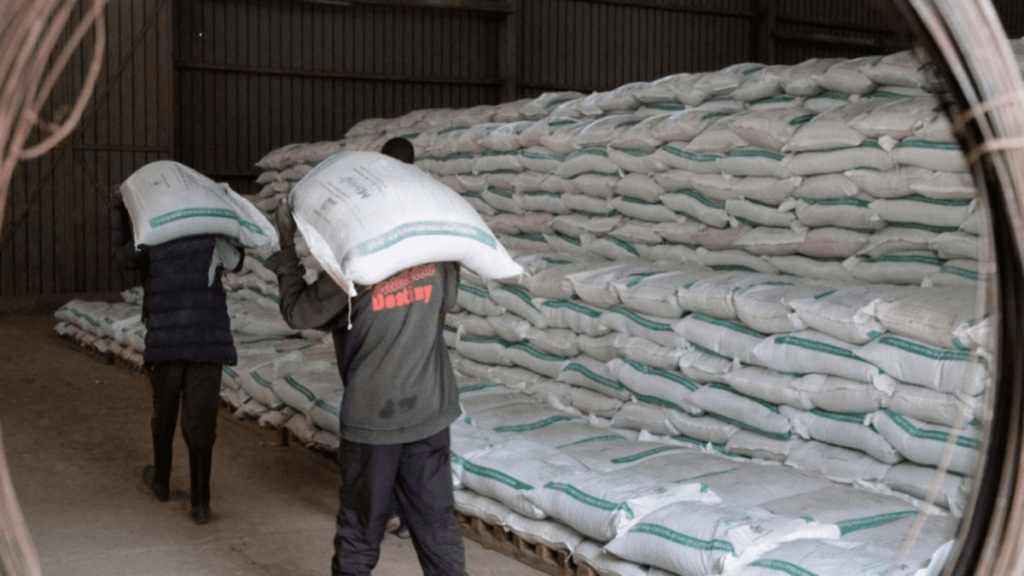
Thousands of Kenyan farmers are in uproar after the National Cereals and Produce Board (NCPB) announced it would buy only one million bags of maize from this year’s bumper harvest of seven million bags. The decision has left many farmers stranded with excess produce and facing potential losses.
In what many describe as a bitter harvest, the government will purchase each 90-kilogramme bag at 3,500 Kenyan shillings (£21), a price farmers say barely covers their production costs. This development comes amid Kenya’s most successful maize season in recent years, with production soaring by 38.8% compared to last year.
“We’ve worked tirelessly throughout the season, investing heavily in fertilisers and other inputs, only to face this disappointing purchase limit,” says John Kiprop, a large-scale farmer from Kenya’s breadbasket region of Trans Nzoia. “What are we supposed to do with the remaining six million bags?”

Farms approar as NCPB is set to buy only 1million sacks of 90kg maize from Farmers despite bumper harvest of upto 7million bags.Courtesy photo
The record harvest, reaching approximately 47.6 million bags nationwide, resulted from favourable weather conditions and increased government support through subsidised farming inputs. However, the celebration of this agricultural success has turned sour for many farmers.
The NCPB’s purchase limit represents a significant shift in government policy. Previously, the board would buy larger quantities to maintain strategic food reserves and stabilise market prices. This year’s restricted purchase plan has sparked fears of market flooding and price crashes.
Agricultural experts warn of far-reaching consequences. Dr Sarah Omondi, an agricultural economist at the University of Nairobi, explains: “When farmers can’t sell their produce at profitable prices, they become discouraged. This could lead to reduced maize planting in the next season, potentially creating a food security crisis.”
The government’s stance remains firm. The Principal Secretary for Agriculture maintains they won’t increase the buying price beyond 4,000 shillings per bag. Officials argue this strategy aims to balance farmer interests with the need to keep consumer prices affordable.
However, farmers’ representatives disagree with this approach. “The government’s decision undermines its own goal of achieving maize self-sufficiency by 2025,” says David Mwangi, chairman of the Kenya Farmers Association. “How can we reduce reliance on imports if local farmers are discouraged from production?”
The crisis has exposed the complex challenges in Kenya’s maize sector. While the country seeks to end maize imports by 2025, the current situation might force farmers to switch to other crops, potentially increasing future import dependency.
Small-scale farmers face the greatest impact. Mary Chebet, who farms three acres in Uasin Gishu County, voices her concerns: “We depend on maize farming for our children’s school fees and daily needs. With limited government purchase and low market prices, how will we survive?”
The situation has created a ripple effect in rural economies. Local businesses report decreased activity as farmers have less money to spend. Transport operators who usually ferry maize to NCPB depots are also feeling the pinch.
Market analysts suggest several potential solutions. “The government could consider a phased purchase approach or partner with private sector buyers to absorb the excess produce,” proposes Michael Ochiang, a market analyst at the Eastern Africa Grain Council.
Some farmers have begun exploring alternative markets, including selling to neighbouring countries where prices might be better. However, cross-border trade comes with its own challenges, including transport costs and regulatory requirements.
The crisis highlights the need for better planning and coordination between government agencies and farmers. Agricultural experts recommend establishing a more transparent and predictable purchasing system that considers both production costs and market realities.
As the situation unfolds, the impact extends beyond the farming community. Consumer groups worry that discouraged farmers might abandon maize farming, leading to future shortages and price increases. This scenario would contradict the government’s goal of ensuring food security and price stability.
The NCPB’s decision marks a critical moment for Kenya’s agricultural sector. It raises important questions about the balance between supporting farmers and managing national food reserves. As the country moves towards its 2025 self-sufficiency goal, the current crisis serves as a crucial lesson in agricultural policy-making and implementation.
The coming weeks will be critical as farmers seek alternative markets for their surplus produce. The government’s response to this crisis could shape the future of Kenya’s maize farming sector and its journey towards food security.



















